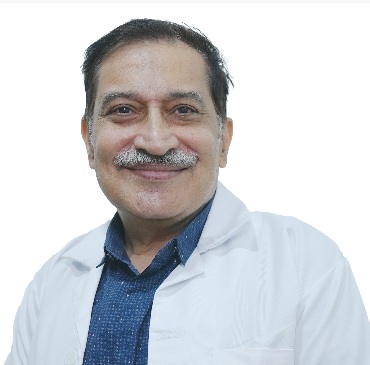Osteotomy Procedure: Reshape Bones for Relief

Treatment Duration
30 Minutes
------ To ------45 Minutes
Treatment Cost
₹ 1,20,000
------ To ------₹ 1,80,000

Table of Contents
- What is Osteotomy?
- What Are the Benefits of Osteotomy?
- Who needs Osteotomy?
- How is Osteotomy Performed?
- What to Expect Before Osteotomy?
- What to Expect on the Day of Osteotomy?
- What to Expect During Osteotomy?
- What to Expect After Osteotomy?
- First Follow Up Appointment
- What are Risks and Complications of Osteotomy?
You can check Osteotomy Cost here.
What is Osteotomy?
Osteotomy is a procedure used to reshape or correct the alignment of your bones by cutting them. Osteotomy procedure can be performed on different parts of the body to correct various bone and joint problems.
Expert Doctors (10)
NABH Accredited Hospitals (10)


What Are the Benefits of Osteotomy?
Osteotomy provides symptomatic relief. It’s benefits include:
- Providing better stability to knees and better range of motion
- Relieving pain from osteoarthritis of knee and hip
- Speeding up recovery and improving the function of knees
- Delaying the joint replacement surgery in active younger population
Who needs Osteotomy?
People who may be advised to undergo an osteotomy are the ones who are in:
- Early stages of osteoarthritis
- When only one side of the knee is damaged
- To delay partial or total joint replacement surgeries
- Misaligned bones
- Misshaped bones
How is Osteotomy Performed?
The procedure is conducted under anaesthesia, which is chosen depending on the type of osteotomy you have to undergo. The procedure consists of the following steps:
- After sterilisation of the surgical site, your surgeon will first cut through the skin.
- Next, they will use guide wires to outline the area of bone to be removed.
- Generally, a wedge-shaped piece of bone is removed along the outline using a surgical saw.
- A portion of damaged or diseased bone is removed and the gap in between the bones is filled by bringing the edges of the two bones together.
- Depending on the kind of osteotomy, your surgeon may place a bone graft into the gap formed after removal of damaged bone.
- Finally, the osteotomy may require the use of pins, screws, plates, or rods to realign or hold the bones together for a while until it heals.
- Use of metallic parts may be either temporary or permanent.
What to Expect Before Osteotomy?
- Once your doctor decides osteotomy as the preferred choice of treatment for you, they will order a bunch of tests for you to undergo to check your health in general like:
- Blood tests to assess overall health
- Urine tests, to assess overall health including looking for diabetes or infections that may interfere during the process of recovery
- Electrocardiogram to check your heart health
- Chest X-ray to check the functioning of your lungs
- X-rays or computed tomography (CT) to scan your bones and joints to plan your osteotomy
- 3D model of the CT scan helps the surgeon to plan the exact size, dimension, and angle of your bone section to be removed
- Depending on the type of osteotomy your doctor will decide between the different types of anaesthesia.
- Some osteotomies may require a bone graft or implants like a rod, plate, or pins to support the bones in the joints; your doctor will discuss this with you before the surgery.
- About two weeks before the procedure you will be asked to
- Stop certain medications like blood thinners (Coumadin), aspirin, ibuprofen, and naproxen
- Discuss medications you have been taking so far and if you have a habit of drinking alcohol or smoking
- As the habit of smoking may slow down the wound and bone healing processes, your doctor may ask you to try stopping it until the wound heals.
What to Expect on the Day of Osteotomy?
On the day of surgery, you will be
- Given a time frame to arrive at the hospital
- Asked to take the medicines if any with just a few sips of water
- A nurse or a healthcare staff will get a consent form signed from you for the surgery
What to Expect During Osteotomy?
Once you are taken to the operation theatre, you can expect the following steps:
- The anaesthesiologist will give you anaesthesia depending on their assessment to numb the area of operation.
- Next, the surgical team will sterilise the surgical site using antibacterial solution.
- Then, the surgical site will be draped using a surgical cloth.
- After these steps, the surgeon starts the actual procedure.
- After the surgery, you will be transferred to a recovery unit, Post Anaesthetic Care Unit (PACU).
What to Expect After Osteotomy?
Some of the steps that you can expect after osteotomy are:
- Your recovery after the surgery will depend on the type of osteotomy and the severity of bone damage along with your strength and motivation.
- The site of surgery will be sore, and it will take time for it to heal.
- Your doctor will put you on a cast, crutches, or splint for a few months to reduce the movement of bone or joint, to position it properly and keep the weight off the operative bone.
- A physical therapist will visit you in the recovery room and physical therapy will begin soon after the procedure, as it builds strength and aids rapid recovery.
- You will be advised to use crutches and undergo physical therapy for several months.
- Generally, you will be discharged from the hospital in one to two days after an osteotomy
- For pain management, your surgeon and nurses will provide you with all the medical care needed to manage the pain like pain killers and even local anaesthesia, if needed.
- If you have undergone osteotomy of the jaw, your jaws will be wired shut, hence you will be advised to be on a liquid diet for six weeks.
- If you have undergone an osteotomy of the big toe, you may be asked to not wear shoes or drive for two to six weeks.
- To help you heal well, your doctor will advise you the following lifestyle practices:
- Stop smoking to allow the bones to heal better
- Eat a plant-based healthy diet
- Maintain a healthy weight
- Follow all the instructions provided by your doctor precisely.
- Your doctor will ask you to exercise every day and give you an appointment for the first follow-up visit depending on the type of osteotomy performed.
First Follow Up Appointment
On the day of your first follow-up visit to your doctor after osteotomy, you can expect the following:
- You will be asked to visit the doctor after the surgery to see how well the osteotomy has healed.
- During this visit, your doctor will advise radiographs to look at the stage of healing.
- Depending on that, they will tell you when you can put the weight on the operated part and when to start rehabilitation exercises.
- You will be taught all the exercises required for you to recover well.
- They will tell you that it may take three or six months depending on the severity of your condition to resume all your activities to the fullest.
What are Risks and Complications of Osteotomy?
Surgical procedures have to be taken care of seriously, as they come with their own set of possible complications. Some of the possible complications include:
- Blood clots
- Injuries to surrounding nerves or vessels (blood and lymphatic)
- Some people may require repeat surgery if the results are unsatisfactory
Hence, please consult your doctor immediately if you experience any of the symptoms mentioned below:
- Infection due to poor wound healing (some of the signs of infection – affected area is red or warm to touch)
- Stiffness of joints
- Failure of the wound to heal
More Treatment options
Last Updated on: 13 October 2025
Author
HexaHealth Care Team
HexaHealth Care Team brings you medical content covering many important conditions, procedures falling under different medical specialities. The content published is thoroughly reviewed by our panel of qualified doctors for its accuracy and relevance.
Latest Health Articles























